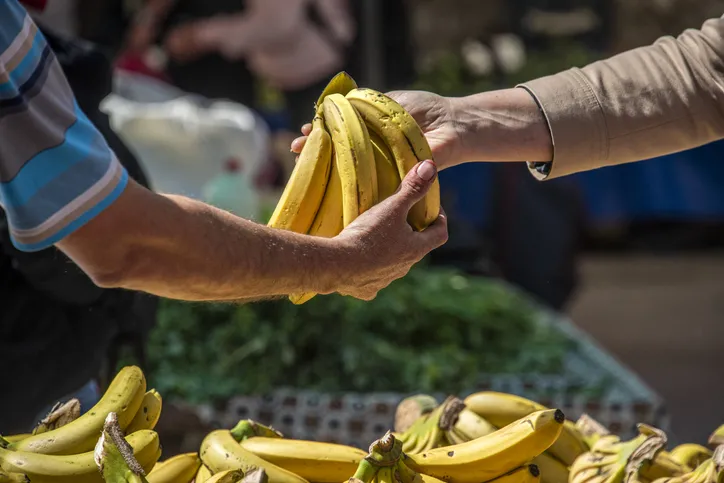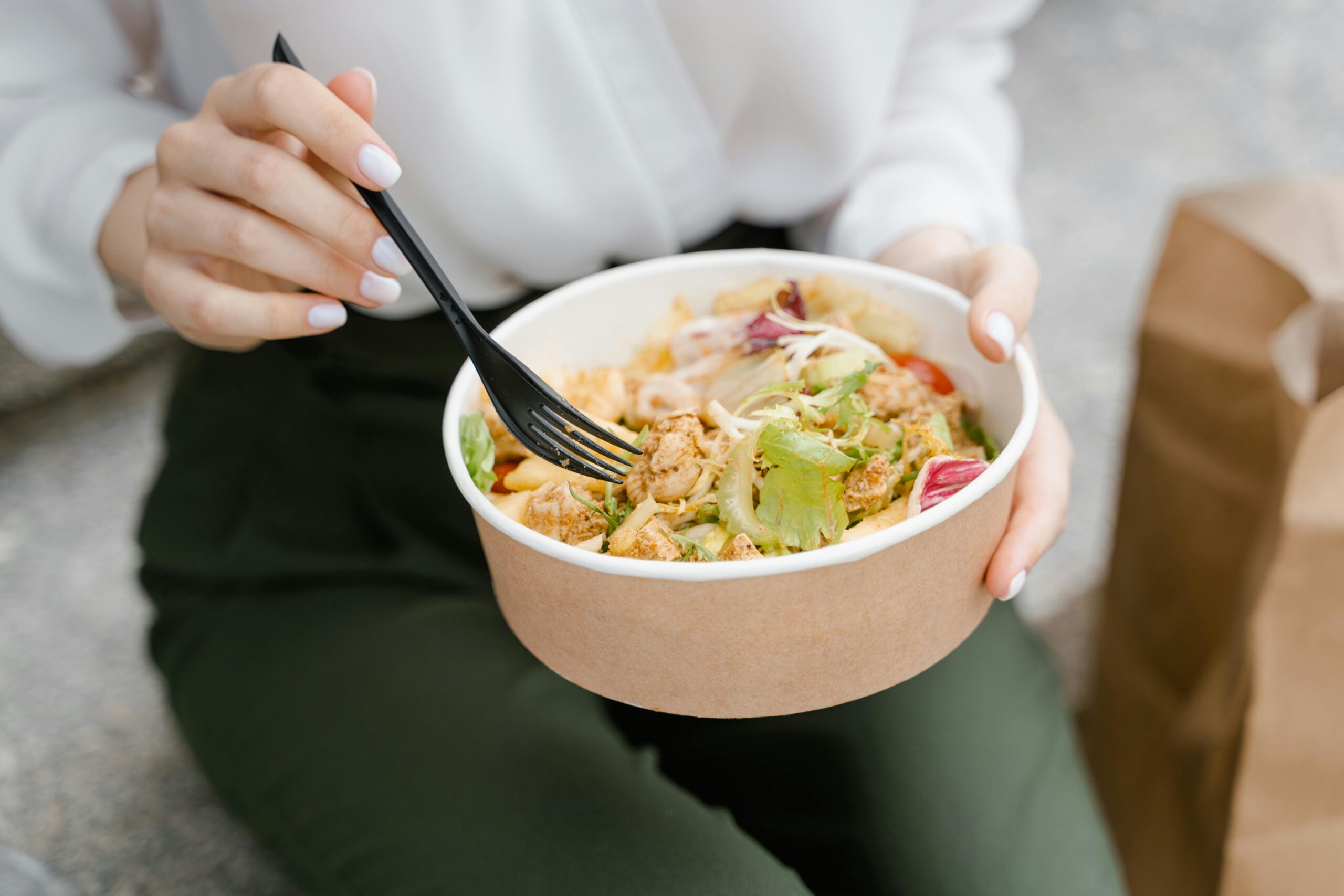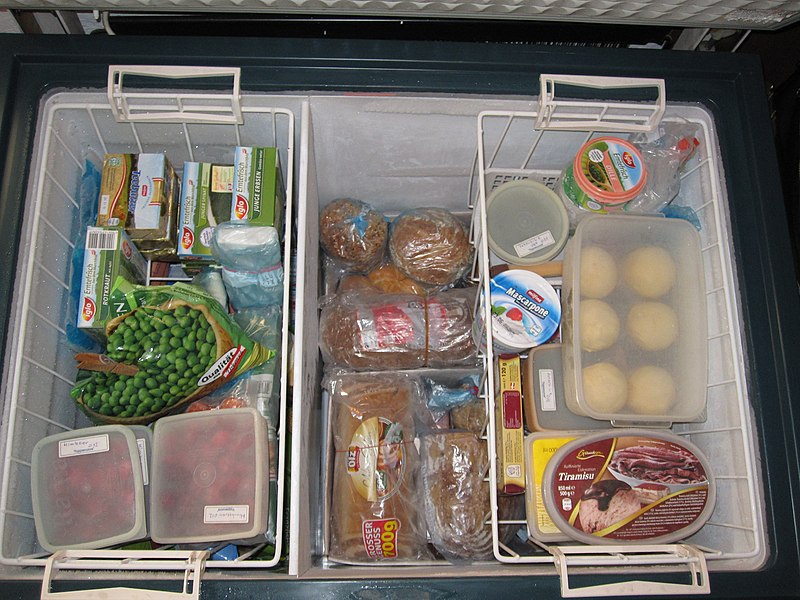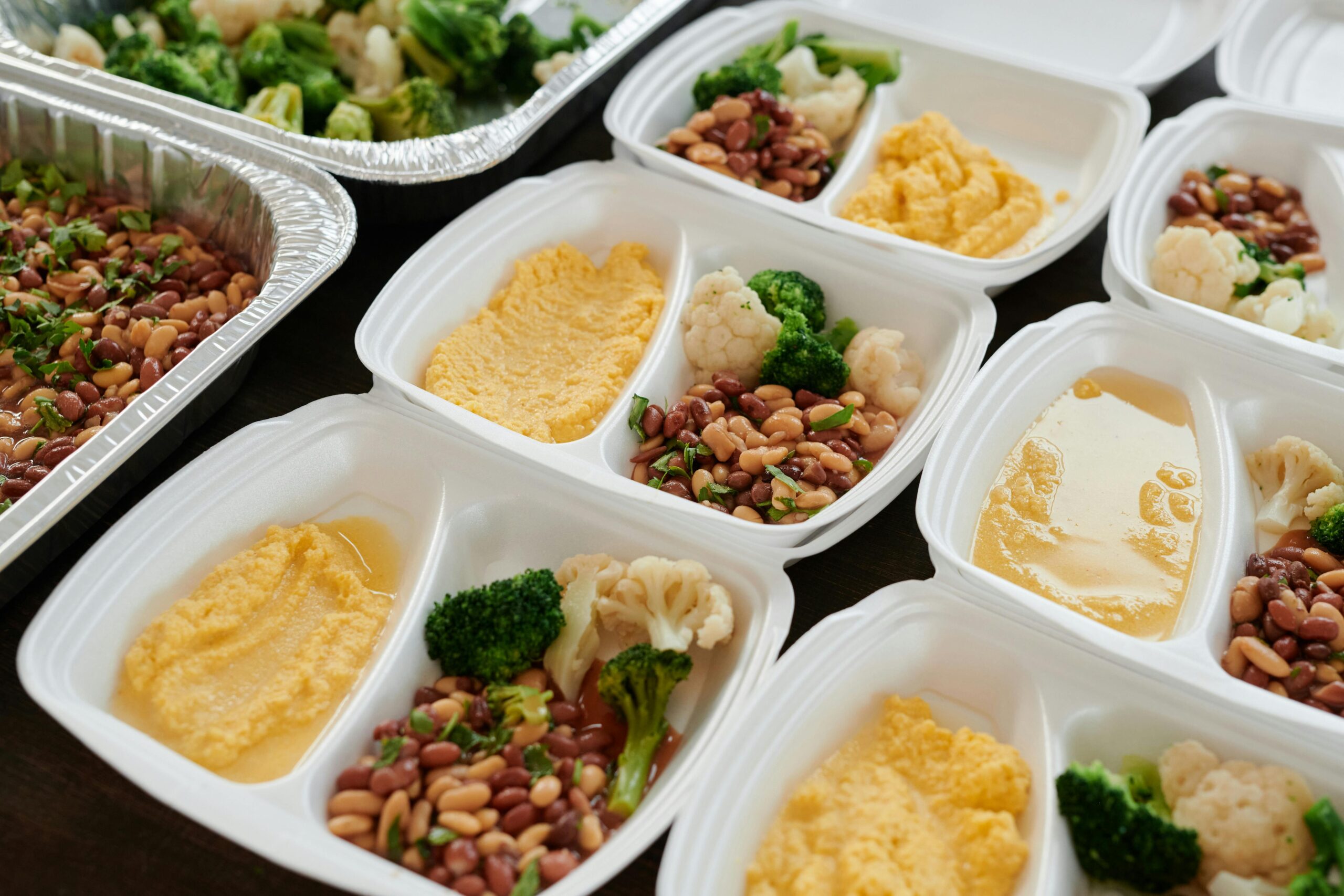Saving money on groceries shouldn’t mean reverting to your college diet of ramen and peanut butter sandwiches. You deserve to eat like a functioning adult—even if you’re on a tight budget. The good news? With a few clever tweaks, you can cut your grocery bill without sacrificing real food, flavor, or nutrition.
From smarter ways to shop to simple kitchen habits that stretch your ingredients further, these hacks are about working with what you have—not depriving yourself. Whether you’re feeding a family or just trying to make your paycheck last longer, here are 15 grocery tricks that help you spend less and eat better.
1. Plan Your Meals Like A Pro

Planning your meals in advance isn’t just for meticulous planners; it’s a strategy that saves you time, money, and stress. Start by creating a weekly meal plan that outlines breakfast, lunch, dinner, and even snacks. This approach helps you create a focused shopping list, which prevents impulse buying and reduces food waste. According to Healthline, meal planning can lead to healthier eating habits and portion control. With a plan in hand, you’ll spend less time wandering the aisles and more time cooking with purpose.
Once your meal plan is set, make a habit of checking your pantry and fridge for ingredients you already have. This step ensures you’re not duplicating items unnecessarily. After that, write a comprehensive shopping list, organizing it by store sections. This list is your roadmap, guiding you through the store efficiently. As a result, you’ll avoid those last-minute midweek grocery runs and enjoy more free time for yourself.
2. Save With Grocery Store Apps

There’s an app for everything these days, and grocery shopping is no exception. Many grocery store chains offer their own apps, providing digital coupons, weekly deals, and even loyalty rewards. According to Consumer Reports, using store apps can significantly reduce your grocery bill without extra effort. Download your favorite store’s app and explore the features that can help you save money and time. Many apps also offer online ordering and curbside pickup options, making your shopping experience more convenient.
In addition to store-specific apps, consider downloading apps like Ibotta or Checkout 51, which offer cashback on grocery purchases. These apps allow you to earn money back on items you’re already buying, making it easy to stretch your budget further. Keeping track of your savings on the app can be quite rewarding and motivates you to keep using them. Before you know it, those small savings will add up, giving you a little extra in your pocket for other things you love.
3. Buy In Bulk The Smart Way

Buying in bulk can be a smart strategy if you know how to do it right. While it might be tempting to buy everything in large quantities, focus on non-perishable items and household staples that you use regularly, such as rice, pasta, canned goods, and toiletries. According to The New York Times, buying in bulk can save you money if you have the storage space and will use the items before they expire. Make sure to assess your storage capacity to prevent clutter and waste.
When purchasing perishable items in bulk, consider how you can preserve them. Meat and poultry can be portioned and frozen, while fruits and vegetables can be prepped and frozen for smoothies or cooking later. Doing this ensures you get the best value for your money without sacrificing food quality. Don’t forget to label everything with dates, so you always use the oldest products first, reducing food spoilage and keeping your kitchen organized.
4. Use Coupons To Buy More For Less

Coupons might seem old school, but they are a time-tested way to save big on groceries. Both paper coupons and digital ones are widely available, giving you flexibility in how you want to save. Start by checking your local newspaper or stores’ websites for coupons that align with your shopping list. It takes a bit of time initially, but the savings can be significant.
Additionally, some stores offer double coupon days, where the value of your coupons is doubled, maximizing your discounts. Keep an eye out for these deals and plan your shopping trips accordingly. Use apps like Honey or Rakuten to find and apply digital coupons automatically at checkout. Over time, you’ll find your grocery bills shrinking, leaving room in your budget for other expenses or savings.
5. Shop Seasonal And Local

Opting for seasonal and local produce not only supports local farmers but also ensures you’re getting the freshest and most flavorful options available. Local produce often has a shorter time from farm to table, meaning it’s fresher and retains more nutrients. As a bonus, it’s usually more affordable due to lower shipping costs. Get to know what’s in season in your area and plan your meals accordingly.
Shopping at local farmers’ markets or through a CSA (Community Supported Agriculture) program can introduce you to a variety of produce you might not typically try. This variety can inspire new recipes and add some excitement to your meals. Developing relationships with local vendors can also lead to personal discounts and the freshest produce picks. Not only will you be eating well, but you’ll also be contributing positively to your community’s economy.
6. Embrace Discount Store Brands

Store brands, or generic brands, have come a long way in terms of quality and variety. The same manufacturers produce many as their name-brand counterparts but at a fraction of the cost. Next time you’re shopping, compare the ingredients and nutritional information of store brands with those of name brands. You might be surprised to find minimal differences in quality or taste.
Giving store brands a chance can significantly reduce your grocery bill without compromising your meals. Start by trying a few staple items like cereal, pasta, or canned goods, and slowly expand to other products if you’re satisfied with the quality. As an additional benefit, many stores offer satisfaction guarantees on their private labels, so you can try them risk-free. Exploring these options can open up a whole new world of budget-friendly yet high-quality grocery shopping.
7. Never Shop When You’re Hungry

One of the simplest yet most effective grocery hacks is to never shop on an empty stomach. Hunger can make everything in the store look appealing, leading to impulse buys and an inflated grocery bill. Plan your shopping trips after a meal or bring a snack with you to curb those hunger pangs. A full stomach equals a more focused mind, helping you stick to your list and budget.
If you find yourself hungry at the store, take a moment to grab something small to eat before starting your shopping. It might seem counterintuitive to buy something before you finish your grocery shopping, but it can save you money in the long run. This simple trick helps you avoid purchasing unnecessary items that might not align with your meal plan. Plus, you’ll have more energy to navigate the store efficiently.
8. Curate The Freezer Wisely

Your freezer is a powerful tool in reducing food waste and extending the life of your groceries. Get in the habit of freezing leftovers and excess ingredients to use at a later date. Freezing fruit and vegetables when they are ripe ensures you have nutritious options for smoothies or soups without the worry of them spoiling. Dividing meat or poultry into portions before freezing allows for easier meal prep and reduces the risk of having to defrost more than you need.
Organizing your freezer is key to maximizing its potential. Use airtight containers or freezer bags and label them with the content and date. Rotate your frozen goods so you always use the oldest items first. With a well-organized freezer, you’ll minimize food waste, enjoy a variety of meals, and appreciate the convenience of having ingredients ready whenever you need them.
9. Shop With Cash To Control Your Spending

Using cash instead of cards can be a game-changer in keeping your grocery budget in check. Before heading to the store, decide on a set amount you’ll spend and withdraw that cash. Paying with cash makes you more conscious of your purchases and helps avoid the temptation of overspending. When you’re physically handing over money, each purchase feels more tangible, encouraging you to stick to your list.
Carrying cash also allows you to prioritize your purchases. If you find a great deal or an unexpected item, you’ll have to choose what fits into your budget. This method promotes thoughtful decision-making and reduces the risk of buying unnecessary items. As a bonus, you’ll leave the store with a clear sense of your financial standing, making it easier to stay within your budget.
10. Avoid Pre-Packaged And Processed Foods

Pre-packaged and processed foods may offer convenience, but they often come at a higher cost and with less nutritional value. Take the time to purchase whole ingredients and prepare meals from scratch when possible. Not only does this approach save you money, but it also allows you to control the ingredients and nutritional content of your meals. As a result, you’ll enjoy healthier eating and a more satisfying cooking experience.
Explore new recipes that use fresh, whole ingredients to make meal prep exciting. You’ll discover that homemade meals can be just as convenient when you’re prepared with the right tools and techniques. Cooking from scratch can also be a fun and creative activity, not to mention the pride that comes from a meal well-prepared. Plus, you’ll be reducing the waste associated with excess packaging from processed foods.
11. Learn The Art Of Substitution

Learning how to substitute ingredients can be a powerful skill when you’re trying to stick to a budget or run out of a particular item. With a bit of knowledge, you can replace expensive or unavailable ingredients with more affordable or accessible options. For example, yogurt can be a great substitute for sour cream, and applesauce can replace oil in baking recipes. This flexibility ensures you can still create delicious meals without making an extra trip to the store.
Begin by familiarizing yourself with common ingredient substitutions and experiment with them in your regular recipes. Over time, you’ll become more confident in making adjustments on the fly, opening up a world of culinary possibilities. Substituting ingredients also allows you to adapt recipes to dietary preferences or restrictions, making your meals more inclusive. Plus, you’ll gain a deeper understanding of your ingredients and how they work together in your cooking.
12. Navigate The Grocery Store Wisely

The outer perimeter of grocery stores is where you’ll find fresh produce, meat, dairy, and bakery items, which are the staples of a healthy diet. By focusing your shopping on these outer areas, you can avoid the processed and packaged foods typically found in the inner aisles. This strategy not only helps you make healthier choices but also reduces the temptation of impulse buys.
Of course, there will be times when you need to venture into the inner aisles for essentials like grains or canned goods. Before doing so, ensure your list is specific and stick to it. This approach keeps your shopping efficient and aligned with your health and budget goals. Over time, focusing on fresh and wholesome foods will likely lead to healthier eating habits and a better overall shopping experience.
13. Always Read The Labels

Understanding food labels is crucial for making informed decisions about the products you purchase. Labels provide information on ingredients, nutritional content, and potential allergens, helping you choose products that suit your dietary needs. Take the time to compare labels, especially for similar products, to identify healthier or more cost-effective options.
Being a savvy label reader also helps you avoid misleading marketing claims. Terms like “natural” or “low-fat” can be deceiving without further investigation into the product’s actual content. By focusing on the ingredient list and nutritional facts, you can make choices that align with your health goals. Over time, this habit will become second nature, empowering you to shop confidently and consciously.
14. Repurpose Leftovers

Learning to love leftovers can transform your approach to meal planning and grocery shopping. Instead of viewing leftovers as a last resort, consider them an opportunity to be creative with your meals. Plan for leftovers by cooking larger portions of meals that can easily be repurposed into new dishes. For example, roast chicken can become chicken salad or soup, while leftover rice can be turned into fried rice or rice pudding.
By embracing leftovers, you’ll reduce food waste and stretch your groceries further. Store leftovers in clear containers, so you can quickly identify what’s available in your fridge. Schedule a leftover night once a week to clear out your fridge and enjoy a variety of meals you’ve transformed. This practice not only saves you time and money but also reduces the stress of planning and cooking every meal from scratch.
15. Keep A Well-Stocked Pantry

A well-stocked pantry is the backbone of efficient meal planning and grocery shopping. Keeping essential staples like grains, beans, pasta, canned goods, and spices on hand gives you the flexibility to create a variety of meals without making frequent trips to the store. Build your pantry gradually by purchasing a few extra items each shopping trip and taking advantage of sales.
Organize your pantry to make it easy to find what you need. Group similar items together and label shelves if necessary. Regularly check expiration dates and rotate stock to ensure you’re using the oldest items first. With a well-maintained pantry, you’ll find it easier to plan meals, minimize food waste, and reduce the stress of last-minute grocery runs.
This article is for informational purposes only and should not be construed as financial advice. Consult a financial professional before making investment or other financial decisions. The author and publisher make no warranties of any kind.








